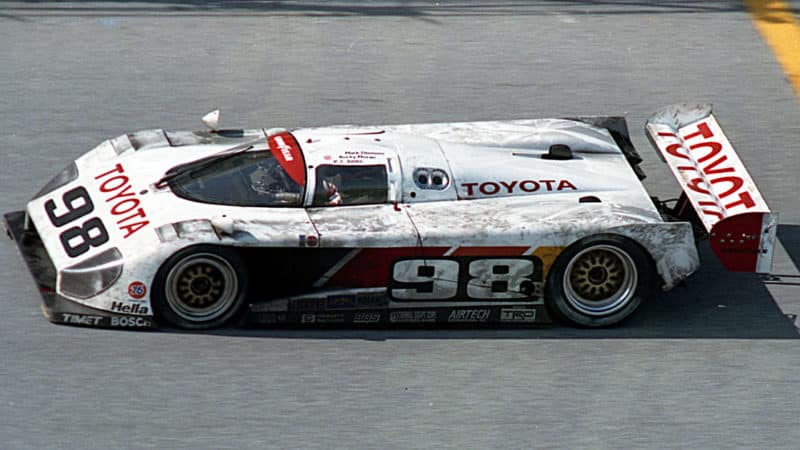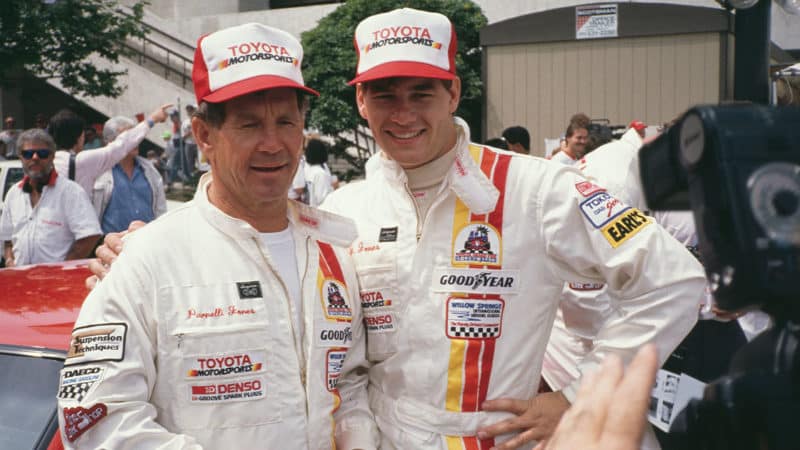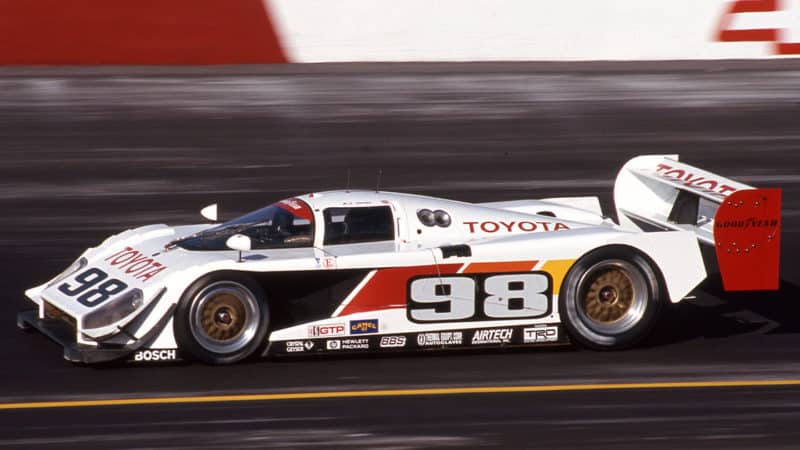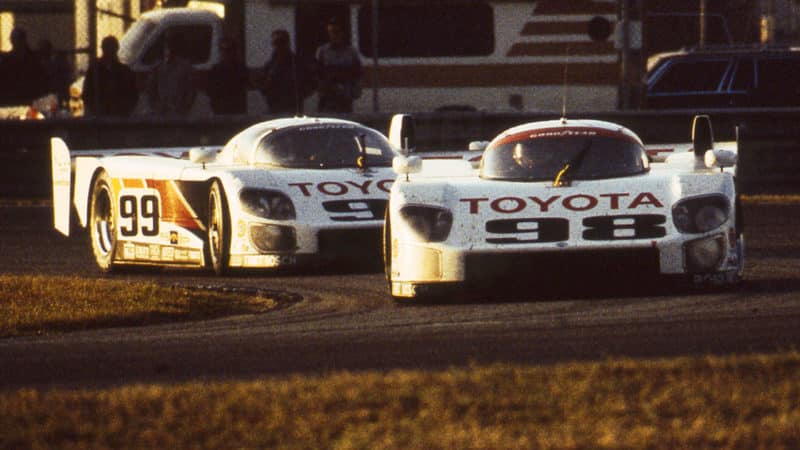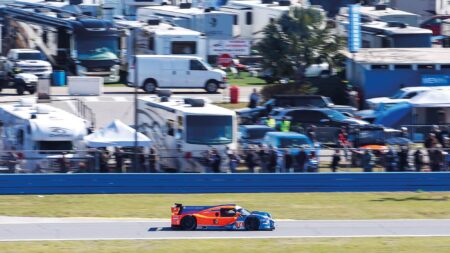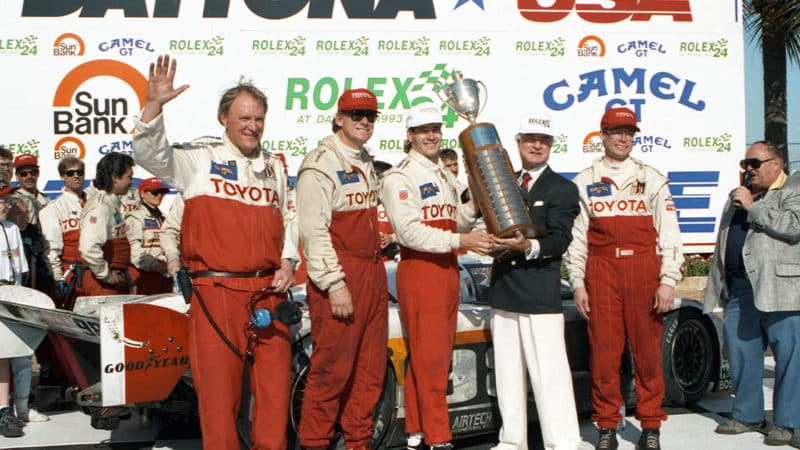Like many seminal competition machines, the MkIII first evolved as a solution to the issues of its predecessor, the HF89/90. Once Gurney’s team got its teeth into developing performance, the car became almost unstoppable.
Juan Manuel Fangio II, who took the MkIII to consecutive drivers’ titles in ’92 and ‘93, has gone on record complaining about how temperamental the HF89 was performance-wise, making its set-up sweet spot very narrow.
John Ward got to work on the chassis for the replacement, whilst Japanese engineer Hiro Fujimori addressed the aerodynamics and Drino Miller developed the power unit.
Key to helping remedy the previous car’s lack of stability was the aero aspect. In contrast to most of the rival GTP cars, whose underfloor was one piece, Ward decided to develop a front diffuser acting as a separate part of the MkIII, thus redirecting air and producing huge downforce.
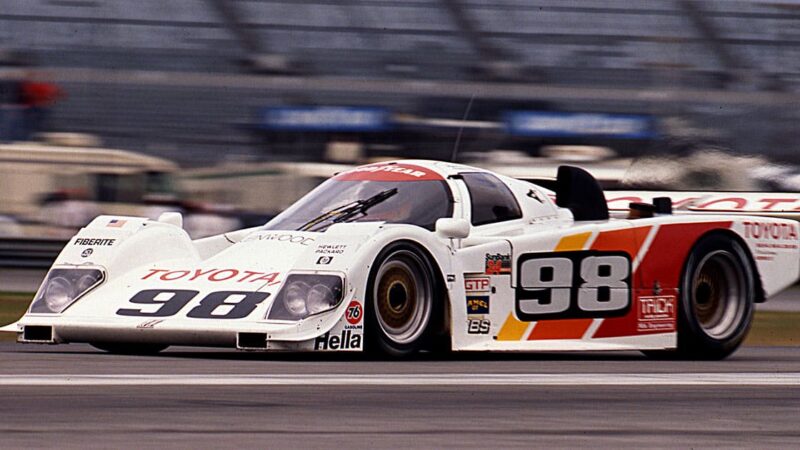
HF89 proved difficult to set up
Getty Images
It wasn’t just the front end which was trick – Fujimori developed a dual-element rear wing several races after its introduction in late 1991, meaning the downforce the car produced leapt from over 6,500lbs to a staggering 10,000lbs.
More disbelief was generated by what was in the back – the power was provided by a production-based, four cylinder, 2.1 litre and highly-boosted engine to pump out 800bhp, at a time when most competitors were using V8, V10 and V12 units.
